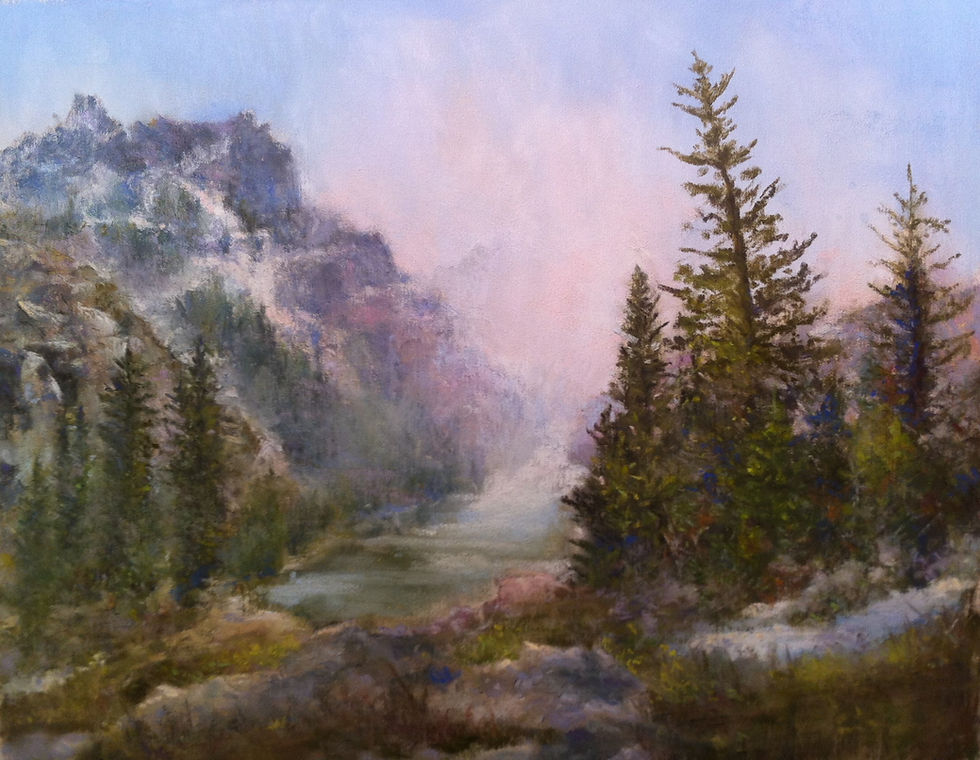Painting Technique - Composition Part II
- Bob Palmerton

- Jun 2, 2017
- 2 min read
Working on the ever-changing Teton Vista, several adjustments to the composition have been made.
I started this painting in out first class in the current session of our Landscape in Pastel session at the Michigan Art Center.
There many lines in this painting., especially in the parallel diagonals of the hill and mountain to the left. At one point, the foreground hill, line of evergreens on the mountain to its right, and the distant peak, all descended at the same angle (see initial version of the painting below). Such a repetitive patterns had to be adjusted. The simple fix was to extend the distant mountain at its left side, then show a peak descending to the left. To add a mysterious feature, notice the very faint distant peak toward the middle of the painting, also slanting down to the left.
I also broke up the line of evergreens and pulled in more snow banks, scattering them across the distant mountain.

I adjusted the perspective problem of the closer (taller) trees on the right compared to the smaller trees on the left. While the initial drawing might have convinced the viewer that the left bank of trees were on the same elevation as those on the right (they were just much smaller), the updated painting properly shows the left trees at a lower elevation and hence simply appear smaller.
Lesson to the artist: figure out your initial viewpoint: if you are standing in the landscape, what perspective do you have of the scene before you?

Also notice that the more distant trees are more faded; the distance and the atmospheric impacts of fog and precipitation will shroud both detail and local color. There is more local color in the foreground trees, grasses and shrubs, color which gets lost the further out you look.
The foreground rocks and grasses were added to reinforce that the viewer is standing on a plateau looking out at the distant trees and mountains.
In designing a painting's composition, don't hesitate to sketch the scene first to convey the perspective correctly, and to capture the proper values. It will save a lot of time and keep you from constantly re-working your landscape!



Comments